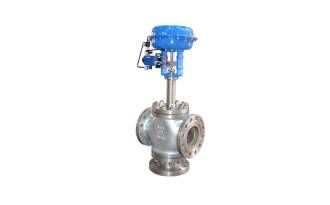Mar. 03, 2020
The valve is a control part in the industrial fluid transmission system, and has the functions of diversion, medium, regulation, anti-backflow, shunt, and pressure relief. There are many types of existing valves, and with the continuous improvement of the process and performance of various types of equipment, the types of valves are still increasing. Today we will take a look at the characteristics of common valves and their applications.
Features and applications of single seated valve:
The leakage of single seat valve when metal seal is ≤10-4CV, when soft seal is ≤10-7CV, it has the characteristics of small allowable pressure difference, complicated flow path and simple structure, so it is suitable for clean with strict leakage requirements and small working pressure difference. Medium occasions. However, small-size valves (such as DN1 / 2, 3/4, and 20) can also be used in applications with large pressure differences, and are the most widely used valves. The shape of the spool determines the flow characteristics, and the original characteristics are lost after flushing. Changing the spool can change the flow characteristics. When selecting this valve, pay attention to the pressure difference check to prevent it from being opened; due to the complicated flow path, it is not suitable for unclean media;
Features and applications of double seat valve:
In contrast to the single-seat valve, it has the characteristics of large leakage and large allowable pressure difference. It is suitable for clean media where the leakage requirements are not strict and the working pressure difference is the most widely used. When selecting this valve, pay attention to check the leakage. Whether the amount meets the process requirements, at the same time, attention should be paid to the effects of poor anti-blocking and bulky.
Features and limitations of cage guided valve:
Cage guided valve has two structures, single seal and double seal. The former is equivalent to a single seat valve and is suitable for single seat valve applications; the latter is equivalent to a double seat valve and is suitable for double seat valve applications. In addition, the sleeve valve also has the characteristics of good stability and convenient assembly and disassembly, but the price is 50-200% more expensive than single and double seat valves. It is the second most widely used valve after single and double seat valves. However, this valve should not be selected for unclean media. At the same time, it should also pay attention to poor anti-blocking and heavy effects.
Application of angle valve:
The throttle type is equivalent to a single seat valve, but the valve body has a simple flow path, so it is suitable for occasions with dirty media with small leakage requirements and small pressure differences, and occasions requiring right-angle piping.

Three-Way Globe Control Valve
The main use of three-way valve:
Three-way globe control valve has three channels, which can replace two direct single seat valves for splitting and converging two sets of flow and temperature difference ≤150 ℃. When DN≤80, the confluence The valve can be used for diverting applications.
Application occasions and limitations of diaphragm valves:
The diaphragm valve has a simple flow path and the diaphragm has a certain corrosion resistance, so it is suitable for two-position shut-off occasions of dirty media and weakly corrosive media. This valve should not be used when there is a demand for regulation accuracy and strong corrosivity (such as a water treatment valve). The valve's Achilles heel is the fragility of the diaphragm.
Butterfly valve features and applications:
The butterfly valve is equivalent to taking a straight pipe as the valve body, and the valve body is equivalent to the valve seat. Therefore, the "self-cleaning" performance is good, the volume is small, and the weight is light. occasion. When DN> 300, it is usually completed by butterfly valve, and the larger the diameter, the more prominent the characteristics.
Ball valve:
Good self-cleaning performance
The “O” -shaped ball valve is unobstructed when fully opened, and has the best “self-cleaning” performance, so it is suitable for two-piece cut-off occasions with particularly dirty, fiber-containing media. The “V” -shaped ball valve has approximately equal percentage adjustment characteristics, so Suitable for unclean, fiber-containing media and relatively large adjustments.
Main features of eccentric rotary valve:
The valve is located between the butterfly valve and the ball valve. It has good "self-cleaning" performance and adjustment performance, and can also be cut off, so it is suitable for adjustment of dirty media and small leakage requirements, but the price of the valve is relatively high.
Headquarter Add.: SUPCON Park, No.309 Liuhe Road, Binjiang District, Hangzhou, 310053, China.
Tel.: +86 571 8111 9774
Fax: +86 571 8111 9737
E-mail: [email protected]
